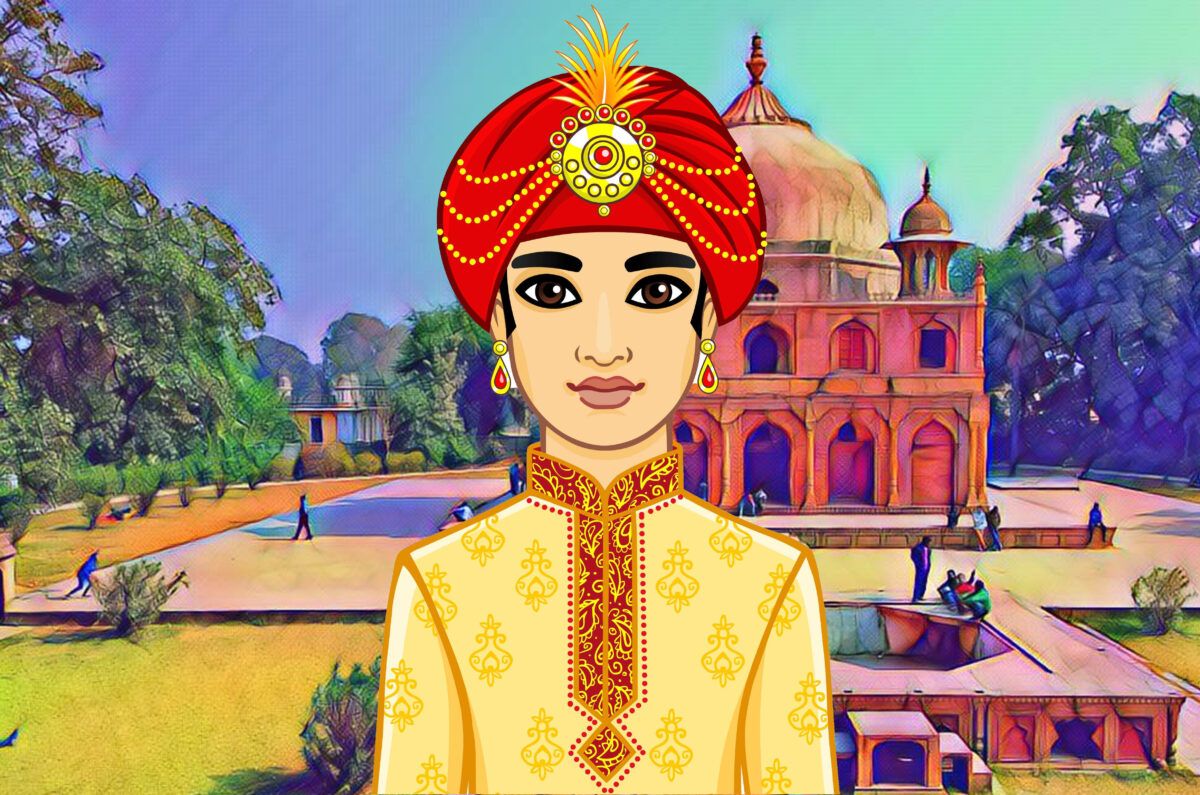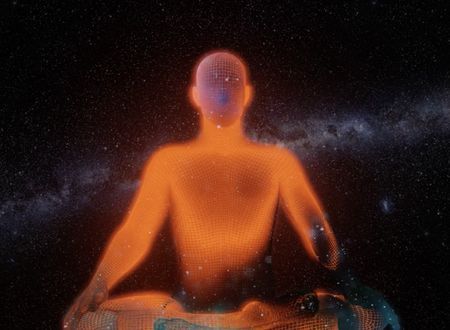In 1884, a prince was born in Bengal, India (now Bangladesh), the second son of three. In 1901, when he was only seventeen, his father died, and the brothers inherited one of the territory’s wealthiest estates. It spanned over fifteen hundred square kilometres with a population of more than a half-million souls.
Although his subjects loved the young married heir-to-the-throne, he had the reputation of being quite the drinker, party boy, and womanizer. In 1905, he contracted syphilis, and four years later, the disease had become very advanced. In his last attempt for a cure, at his wife’s and brother-in-law’s behest, he traveled to Darjeeling in the eastern Himalayas to seek treatment. There he died on May 8th, 1909, at age twenty-five.
His cremation was scheduled for the following day. They built a bamboo on a stream’s bank and tied the body to the cot with sticks both below and above. However, an incredible storm began to downpour the moment it was lit. The prince’s friends and relatives ran for cover, leaving only a few people to restart the fire after the rain.
When the funeralgoers returned, they found the pyre floating down the stream to which the corpse was still tied. They endeavored to retrieve it but in vain. When they explained what had transpired to the prince’s brother-in-law, he ignored them and pronounced the cremation complete.
The body drifted several kilometres downstream and came to rest near the cave of the great Siddhi Babaji, who is said to be walking the Earth until all of humanity reaches enlightenment. Babaji told two of His disciples the man was His student and sent them to retrieve the body from the water. Soon after, Babaji applied a paste to the prince’s scalp, and he once again began to breathe.
Within three days, the prince regained consciousness but suffered from total amnesia. Starting with the basic skills of life, Babaji and the other sadhus taught him as one would a young child. Within the span of only a few years, he became a master of hatha yoga and very knowledgeable in alchemy and Ayurveda. Using these technics, the formerly dead man became, once again, perfectly healthy and robust.
Babaji formally initiated him as a disciple four years after his resurrection and gave him his mantra. Shortly after, the former prince began to wonder about his parents and previous life he could not recall. When he questioned Babaji about it, the only reply was, “I shall send you home when the proper time comes.”
Three years later, the prince-swami, now a loincloth-wearing naga sadhu with matted hair and a long beard, suddenly remembered his home in east Bengal. When Babaji heard this, He said to him, “Go. Your time has come. If you can tear off the veil of maya (illusion), you can return to us.”
Even though he recalled being from Bengal, he wasn’t sure of the exact location. He wandered for a few years more before eventually reaching his former home (Dhaka) in December of 1920. He began to meditate there near a sacred fire he kept perennially lit. People immediately noticed the striking resemblance between this swami and their deceased prince. Shortly thereafter, news spread, and he began to be recognized by relatives, servants, and hundreds of citizens.
When the prince’s older sister heard the happenings, she sent her son to bring the sadhu into the palace. When the swami-prince arrived, he immediately recognized his sister and grandmother. He began to cry when he saw a photo of his younger brother, who died during his absence of twelve years. He also learned his older brother had passed as well, leaving the kingdom in the hands of stewards. As the sadhu’s memory returned, he recalled that his wife and brother-in-law had planned to murder him in 1909.
Really long story short, the prince decided that in order to complete his dharma and indeed renounce this world, he needed to regain his birthright and property. It became arguably one of India’s most famous legal cases, going to court in April of 1930 and continuing for six years. The records show sixteen hundred nine witnesses and over two thousand exhibits. In 1993 through a series of articles, The Indian magazine “Blitz” investigated the story at one point, reported –
“The ages of the witnesses ranged from 21 to 100: they came from all castes and creeds. They were Hindus, Muslims, Sikhs, Parsis, Christians, Buddhists, animists, naga sannyasis, and bhutias [Tibetans]; there were quite a few Englishmen too. There were doctors and lawyers, sculptors and photographers, zamindars, ryots, moneylenders, professors and pandits, fishermen and coachmen, mahouts, and grooms. Quite a few pimps and prostitutes rendered evidence and the testimony of some of the latter related to intimate sexual pleasures.”
Testimony was also given by some of Sri Babaji’s disciples, including Baba Pritam Das, Baba Lok Das, and Baba Darshan Das. Witnesses also included his grandmother, sister, older brother’s wife, hundreds of servants, and members of royal families from other Indian states.
During the proceedings, the court called in Scotland Yard investigate evidence presented by both sides. They, in turn, contacted the Scottish Union Insurance company, which had insured the prince’s life in 1905, who confirmed that the prince’s identifying marks, defined in their policy, were indeed present on the sadhu’s body.
On August 24th, 1936, the court ruled in favor of the prince. They found he had been poisoned before being taken to the cremation ground. His brother-in-law was found guilty of plotting the murder. Immediately after that, the people of the prince’s kingdom celebrated for three days enthroning him once again. His wife, however, refused to recognize him as her husband and filed an appeal that same year that would eventually go to a high court in London. After reviewing twenty-eight massive volumes of court records and more than seven hundred photographs, the English court dismissed the appeal nearly ten years after it was filed on July 30th, 1946.
News reached the prince from his attorneys two days later, on August 1st, 1946, at age sixty-two, that he was finally fully and completely vindicated. Ramendra Narayan Roy Chowdhury was pronounced king. The verdict also made headlines in both Calcutta and Dhaka. It was precisely thirty-three years since he had been initiated into Babaji’s order. Although the people expected jubilation, Blitz magazine recalled –
“Two days after receiving the cable from London, even as congratulatory telegrams and messages were pouring in, the Bhawal Sanyasi died suddenly on Saturday, the 3rd of August 1946. His cremation was to take place the next morning at 9 a.m. Throughout the night, the belief gained credence in the city that there would be a miracle and that the sannyasi would rise from the pyre as a young man of eighteen.”
Although on the morning of August 4th, there was a storm just as there had been in 1909 at the prince’s first funeral, the fire consumed the body entirely within a few hours. He clearly chose to tear off the veil of illusion. The twice-dead prince was saved first from the funeral pyre and a second time from eternal reincarnations in the chaos of worldliness.
There is a scripture in the Holy Bible, a favorite of my mentor Brooks he often repeated, which I eternally recall – “All things work together for good for those who love God and are called according to His purpose.” In another verse, the prophet Isaiah quoting God says, “I know the plans I have for you, plans to prosper you and not to harm you, plans to give you hope and a future.”
You may feel today that life has been unjust. That would be the case for most people living from a single-incarnation perspective. Nonetheless, eventually, every illness is cured, every evil is defeated, every relationship is restored, and all wrongs are made right. Your life and mine is not the span of some seventy or eighty years – it reaches through millions of incarnations. Who you think you are and who I think I am, are just characters in a play.
When we’re finally tired of the drama, God gives us the ability to step away and say, “No more cheese – I just want out of the trap.” All desires must be exhausted or renounced – there is no other way. Like Arjuna, Jesus, Maharaj-ji Baba Neem Karoli, and so many others, we must live out our callings completely, leaving nothing undone. Then and only then are we allowed to leave the stage.
Be encouraged! God’s plans for you are exemplary, no matter how dark it seems. Freedom will come to you, even if it takes two deaths in one lifetime to accomplish it!
Blessings for your journey and that of all those you hold in agape!
Ram Ram!
In Christ With You!
JC
P.S. For further reading, here’s a great article on the case – https://bit.ly/twicedeadprince. Love to hear your comments!









Comments & Discussion
15 COMMENTS
Please login to read members' comments and participate in the discussion.